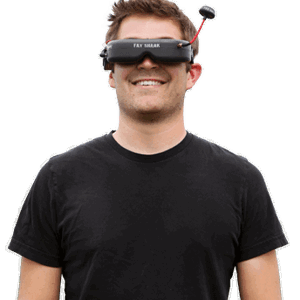fpv racing 101
FPV Racing 101
July 07, 2016
Categories: Products/Drones Tags: FPV FPV Racing
FPV racing is the fastest growing segment in RC and now is the time to get started in it! For many customers that are new to the sport, the technology and terminology used in FPV racing can seem intimidating. We have put together a quick overview of essential FPV racing components that will help you feel more comfortable and knowledgeable about getting into the sport! Big Boy Toys and Hobbies carries everything you would need to get started in the world of FPV racing. Also check out the local FPV racing facebook group Acadiana FPV.
Flight Controller (FC):The flight controller is the brain of an FPV racer that connects to the receiver, power distribution board, motor ESCs. The sensors, firmware and processor(s) on this small circuit board are what control the flight path of the racer. It executes pilot commands and stabilizes the aircraft by combining output from the receiver with the information from its sensors and translating that into precise RPM adjustments for each motor's speed control.
Many of the most popular flight controllers, such as the Naze 32, require some soldering skills in order to connect them to the power distribution board and speed controls.
Power Distribution Board(PDB): The power distribution board has an input for a 3s or 4s lipo battery and safely distributes this power to all of the on-board electronics.
Video Transmitter (VTX): Most FPV racing cameras must be connected to a separate transmitter in order to send video signals to the pilot's headset or monitor. Almost all video transmitters use a 5.8ghz signal and are compatible with a wide variety of headsets and monitors from different manufactures.The higher the number on the VTX, the longer the usable video range you will have. Most races will require 25mw or 200mw. 600mw are usually used for long distance or freestyle flying.
Antennas: Antennas both transmit and receive the video signal. One will be needed on your video transmitter and also on your receiver (goggles, monitor). A good set of antennas such as the TBS Triumphs or VAS Race Specs will give better distance and clarity compared to the linear antennas that often come with video transmitters. For practice the VAS Duraspecs are very durable. For racing or flying fairly close a set of omni directional antennas provide coverage 360 degrees around you. For longer distance journeys or applications where more penetration is needed, a set of directional antennas will give you much longer range (examples of these are helical antennas, crosshair, and pepperbox).
Electronic Speed Control(ESC): FPV racers have 4 on board ESC's, one for each motor. Each speed control is connected to the flight controller which will adjust motor speed to execute pilot commands and stabilize the racer in flight. There are 3 things to keep in mind when selecting an ESC. Size, weight, and amperage. Most common amps are 20 amp or 30 amp. If you are the type of pilot that demands a lot from your rig with hard throttle all of the time, go with a 30 amp ESC. Another important thing to lookout for is to make sure your ESC's are equipped with the BLheli firmware. This is the most popular firmware out there and most FPV specific ESCs run this or come with it from the factory.
Receiver (RX):As with any RC aircraft, an FPV racer requires a receiver to receive control inputs from the pilot’s radio. It connects directly to the flight controller which converts the pilot inputs into the motor responses needed to control the racer's flight path. Most FPV racing receivers are "serial" receivers that only require a single connector to send all information to the flight controller. Nearly all serial receivers "talk" to a flight controller using these protocols: SRXL (aka serial), Remote Receiver, or PPM. When choosing a serial rx for a FPV racer, make sure it offers a protocol that is compatible with the flight controller.
Raceband: Raceband is a special video frequency band used by FPV racers for competition. It resides within the 5.8ghz FPV video band and provides more space between frequencies so as many as 6-8 pilots can race at once without interfering with one another. The standard video frequency band - channels 1-6 on most headsets and vtx - is best for recreational FPV users who are flying by themselves or with a couple of other pilots.
Headset(aka goggles):An FPV headset is the most common way FPV racing pilots view the images sent from their on-board camera and video transmitter. They are worn like goggles and have video displays for each eye. Nearly all have 5.8ghz video receivers that are compatible with the most popular video transmitters.
Monitor:Some racing pilots and recreational FPV enthusiast prefer a standalone monitor to view the images from their camera and transmitter. Benefits of using the monitor include lower cost and the ability to see what the pilot does. It also makes it easier for the pilot to maintain visual contact with the aircraft while flying FPV.
Cleanflight:Cleanflight is the most popular flight controller software on the market and is compatible with a number of flight controllers from different manufactures. Using the Cleanflight programming interference, pilots can plug into their flight controller with a PC or a mobile device and fine tune the flight characteristics of their model. To download a copy of the software go to cleanflight.com


Search
All Categories
All Tags
- Ultra Micro (1)
- Trucks (2)
- Traxxas (1)
- RC Helicopters (3)
- RC Cars/Trucks (2)
- RC Boats (1)
- RC Airplanes (2)
- Parkzone (1)
- NRHSA (1)
- nitro (1)
- Las Vegas (1)
- JC Zankl (1)
- Gaui (1)
- Fuel (1)
- FPV Racing (1)
- FPV (1)
- Family Fun (7)
- Electric (4)
- educational (1)
- Convention (1)
- Charity Event (1)
- Brushless (2)
- Boats (1)
- Alan Szabo (1)
- Airplanes (1)
- 3D (2)
By Month
Small Business Website Designed & Developed by

